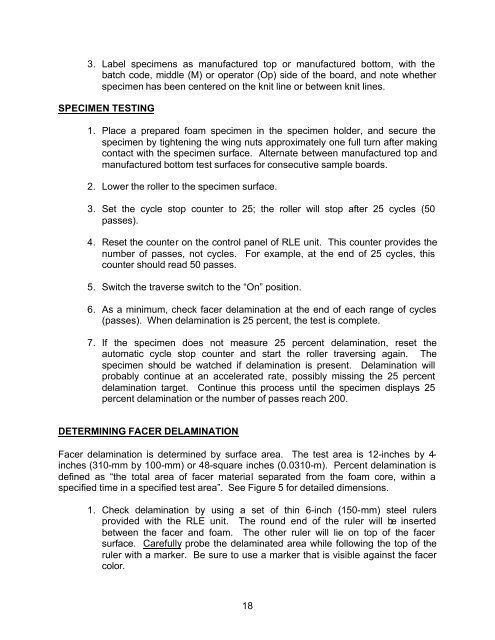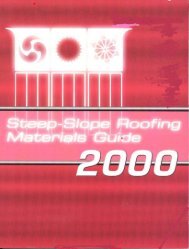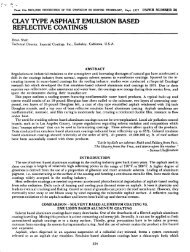1 Study of Polyisocyanurate Rigid Foam Board Facer Behavior ...
1 Study of Polyisocyanurate Rigid Foam Board Facer Behavior ...
1 Study of Polyisocyanurate Rigid Foam Board Facer Behavior ...
Create successful ePaper yourself
Turn your PDF publications into a flip-book with our unique Google optimized e-Paper software.
3. Label specimens as manufactured top or manufactured bottom, with the<br />
batch code, middle (M) or operator (Op) side <strong>of</strong> the board, and note whether<br />
specimen has been centered on the knit line or between knit lines.<br />
SPECIMEN TESTING<br />
1. Place a prepared foam specimen in the specimen holder, and secure the<br />
specimen by tightening the wing nuts approximately one full turn after making<br />
contact with the specimen surface. Alternate between manufactured top and<br />
manufactured bottom test surfaces for consecutive sample boards.<br />
2. Lower the roller to the specimen surface.<br />
3. Set the cycle stop counter to 25; the roller will stop after 25 cycles (50<br />
passes).<br />
4. Reset the counter on the control panel <strong>of</strong> RLE unit. This counter provides the<br />
number <strong>of</strong> passes, not cycles. For example, at the end <strong>of</strong> 25 cycles, this<br />
counter should read 50 passes.<br />
5. Switch the traverse switch to the “On” position.<br />
6. As a minimum, check facer delamination at the end <strong>of</strong> each range <strong>of</strong> cycles<br />
(passes). When delamination is 25 percent, the test is complete.<br />
7. If the specimen does not measure 25 percent delamination, reset the<br />
automatic cycle stop counter and start the roller traversing again. The<br />
specimen should be watched if delamination is present. Delamination will<br />
probably continue at an accelerated rate, possibly missing the 25 percent<br />
delamination target. Continue this process until the specimen displays 25<br />
percent delamination or the number <strong>of</strong> passes reach 200.<br />
DETERMINING FACER DELAMINATION<br />
<strong>Facer</strong> delamination is determined by surface area. The test area is 12-inches by 4-<br />
inches (310-mm by 100-mm) or 48-square inches (0.0310-m). Percent delamination is<br />
defined as “the total area <strong>of</strong> facer material separated from the foam core, within a<br />
specified time in a specified test area”. See Figure 5 for detailed dimensions.<br />
1. Check delamination by using a set <strong>of</strong> thin 6-inch (150-mm) steel rulers<br />
provided with the RLE unit. The round end <strong>of</strong> the ruler will be inserted<br />
between the facer and foam. The other ruler will lie on top <strong>of</strong> the facer<br />
surface. Carefully probe the delaminated area while following the top <strong>of</strong> the<br />
ruler with a marker. Be sure to use a marker that is visible against the facer<br />
color.<br />
18





